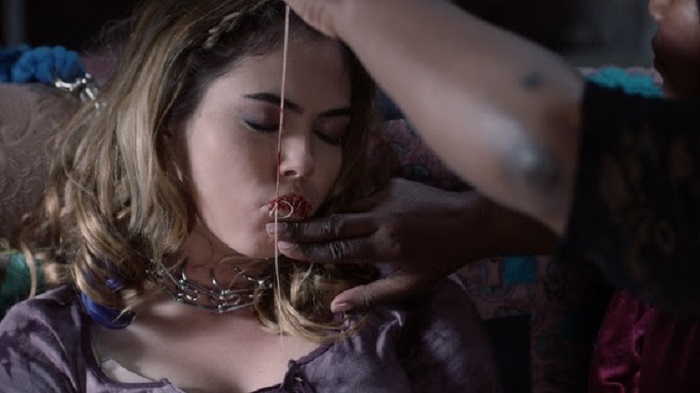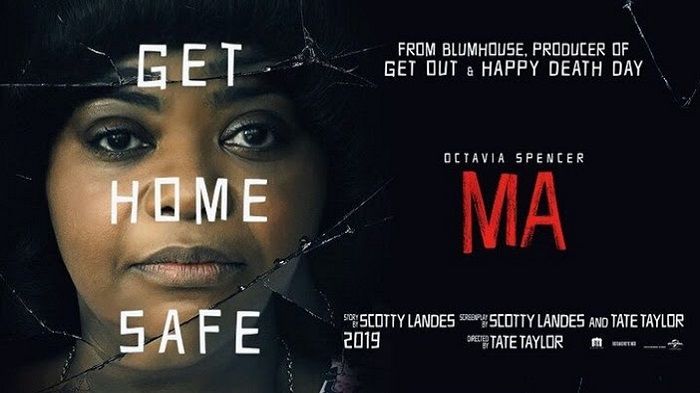VFX Legion recently wrapped work on MA, Blumhouse Productions’ new psychological horror film, which opened in theatres on 31 May. The award-winning studio tapped its the company’s experience digitally mutilating and eviscerating characters and augmenting practical footage to craft a range of photorealist visual effects that heightened the visceral impact of some of the movie’s most gruesome and suspenseful scenes.
Horror films are Legion’s wheelhouse. The LA/ B.C.-based company has created visual effects for a long roster of movies in this genre, including several Blumhouse films, such as Sinister 2, Insidious: Chapter 3, Ouija, Amityville: The Awakening and two films from the Purge franchise.
The production company’s most recent film, MA, follows the story of Sue Ann (Oscar winner Octavia Spencer,) a middle-aged woman living a solitary life. Abused, mocked, and shunned in high school, these past traumas fuel her obsession with ‘fitting in.’ When a group of under-age teens asks her to buy them some liquor, Sue Ann sees an opportunity to finally make some friends.
Taking on a maternal persona, she gains the teenagers’ trust, extending the hospitality of her home as a safe haven for their drinking parties. Ma soon begins to insert herself into their lives, and the partying and fun turn into a ghoulish nightmare as she takes revenge for the suffering that she endured decades earlier.
As the plot unfolds, the evil protagonist goes from friend to captor, keeping the teens captive in her basement as she calmly goes about torturing them. During one nightmarish scene, Ma sews a girl’s lips together. A prosthetic applied to her face enabled practical footage to capture the stitchery, with Legion’s visual effects adding chilling realism to the piercing of her flesh. The branding of a boy’s chest with a red-hot iron called for artists to create computer-generated steam and smoke that emanates from his skin as the iron makes contact, as well as the charred raw flesh and fresh scar it left behind. Legion digitally cleaned up the scene and delivered a sequence of shots that seamlessly melds the synthetic imagery with the texture and feel of the live-action footage.
Visual effects were relied on throughout the entire final scene of the movie, which shows the house catching fire and the blaze growing, ultimately consuming the structure. Legion’s team of artists created CG flames with the scale and ferocity to envelopes the house, layering in smoke, particles, and burning embers into add texture and depth.
“The final scene presented the biggest creative and technical challenges. It closes the movie with a sweeping aerial shot from a drone that begins at a distance and passes over the house revealing a 360 view of it engulfed in flames. A late addition to the production, the shot was included to ensure that the climactic ending left the audience with no doubt as to the fate of anyone still inside,” said VFX Legion creative director, James David Hattin. “

The original camera move wasn’t stable, so Legion was tasked with digitally recreate director Tate Taylor’s vision of the movie’s final moments. Crafting a CG sequence with this panoramic aerial view required a model of the house to be built from scratch, and then enveloped in a computer-generated inferno.
“Our team wasn’t on-set during the shoot, so we didn’t have a scan of the house or detailed specs to work from. This presented the kind of challenge that makes Legion’s remote pipeline invaluable. Tapping our ability to work as a single unit with the company’s global collective of talent, we reached out to our master model builder and CG Artist, London-based Mark Hennessy-Barrett,” adds Hattin.
Working on a tight schedule with only a plate photo taken by the drone, and eye-level footage from the movie as visual references, Mark built a ‘destructible,’ detailed replica of the house from the ground up. Once Hennessy-Barrett completed the model, Legion was able to begin work on the dynamics. Artists simulated raging flames coming out of every window on each floor, scorching and incinerating the exterior of the structure, and CG smoke, along with smouldering embers, and falling debris. The final shot recreated the sweeping camera move, climatically ending the film with a single overhead view of Ma’s house of horrors consumed in flames.
“Of the dozens of CG elements that we created, some of the flames simulated in Houdini to cover sections of the roof didn’t quite hold up for the whole camera move. We opted to use stock footage from ActionVFX’s library. Layering the high-resolution elements into the shot provided an efficient solution, maintained the integrity of the shot and kept us on schedule,” said Legion’s head of production, Nate Smalley.

“Legion’s team is always excited when we’re called on to create visual effects for a Blumhouse film, and MA was no exception. We’re thrilled to have had the opportunity to work with them again and proud of our artists for meeting every challenge that MA presented” said Hattin.
The mix of equipment and software used to create the VFX for MA included Redshift for rendering CG shots, Maya for animation, and Houdini for simulations, along with Legion’s own proprietary technology.

